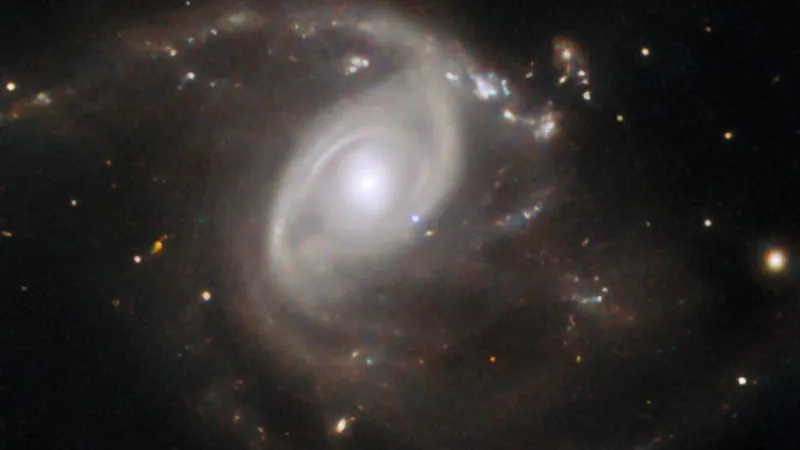
Hubble Telescope Captures Incredible Image of Rare Supernova SN 2024PI – A Cosmic Phenomenon Unveiled!
2025-01-15
Author: Siti
Hubble Telescope Captures Incredible Image of Rare Supernova SN 2024PI – A Cosmic Phenomenon Unveiled!
The Hubble Space Telescope has recently unveiled a stunning image of a rare supernova, designated SN 2024PI, located within the depths of the Gemini constellation, approximately 650 million light-years from Earth. This captivating celestial event provides a unique glimpse into the life cycle of a star, showcasing the spectacular chaos that ensues when massive stars meet their explosive end.
In this newly released photo, we see the galaxy LEDA 22057, which was the birthplace of the supernova explosion. The magnificent spiral galaxy is beautifully illustrated with its swirling arms stretching away from a vibrant oval core that emits a brilliant white glow, effortlessly blending into the surrounding tapestry of stars and cosmic dust.
What makes SN 2024PI particularly intriguing is its appearance as a striking pale blue dot nestled slightly off-center from the galaxy's bright core, amidst the dense bands of gas and interstellar matter. This image was captured about six weeks after the initial discovery of the supernova, hence its faint luminosity compared to its previous, more brilliant state.
Supernovae are astronomical phenomena that occur at the end of a star's lifecycle, particularly when a star collapses due to gravitational forces and subsequently explodes. SN 2024PI is classified as a Type Ia supernova, which is a rare subtype that requires the presence of a white dwarf star. This "dead" star, roughly the size of a planet, represents the remnants of a once-thriving star and plays a crucial role in the formation of such supernovae.
However, the mere existence of a white dwarf is not enough; it must exist in a binary star system, drawing material from a companion star. According to officials from the European Space Agency (ESA), "When a white dwarf siphons material from a stellar partner, it can reach a mass where it can no longer support itself." The result is a cataclysmic explosion produced by a runaway nuclear fusion reaction, leading to a dazzling supernova event observable across vast cosmic distances.
The discovery of this cosmic condition stemmed from an automated survey responsible for monitoring our night sky. This particular survey meticulously maps the northern half of the sky every two days and has catalogued over 10,000 supernovae to date—opening new avenues for research and understanding of these volatile stellar phenomena.
The Hubble Space Telescope, which has been operational since its launch in April 1990 aboard the space shuttle Discovery, continues to be at the forefront of astronomical observation. It is a joint project between NASA and ESA, managed by NASA’s Goddard Space Flight Center in Greenbelt, Maryland. Given its unparalleled ability to capture distant celestial objects in remarkable detail, Hubble remains an invaluable tool for scientists seeking to unravel the mysteries of the universe.
Stay tuned as we continue to explore the wonders of our universe!




 Brasil (PT)
Brasil (PT)
 Canada (EN)
Canada (EN)
 Chile (ES)
Chile (ES)
 Česko (CS)
Česko (CS)
 대한민국 (KO)
대한민국 (KO)
 España (ES)
España (ES)
 France (FR)
France (FR)
 Hong Kong (EN)
Hong Kong (EN)
 Italia (IT)
Italia (IT)
 日本 (JA)
日本 (JA)
 Magyarország (HU)
Magyarország (HU)
 Norge (NO)
Norge (NO)
 Polska (PL)
Polska (PL)
 Schweiz (DE)
Schweiz (DE)
 Singapore (EN)
Singapore (EN)
 Sverige (SV)
Sverige (SV)
 Suomi (FI)
Suomi (FI)
 Türkiye (TR)
Türkiye (TR)
 الإمارات العربية المتحدة (AR)
الإمارات العربية المتحدة (AR)